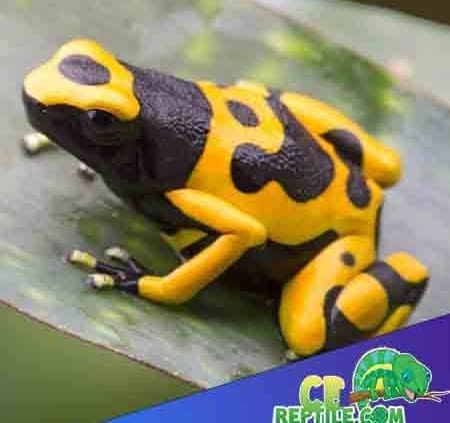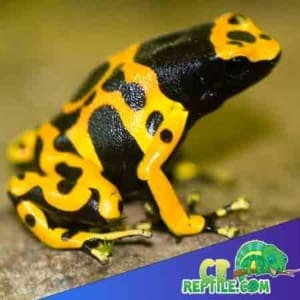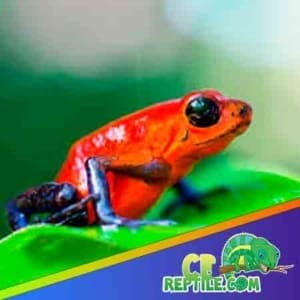
Poison Dart Frog Lifespan: How Long They Live & How to Help Them Thrive



One of the most common questions new keepers ask is, “How long do poison dart frogs live?” The answer is encouraging: with stable parameters and consistent husbandry, many captive-bred dart frogs can live for a decade or more. This guide explains typical lifespans, what shortens or extends them, and the practical steps—humidity, temperature, UVB, nutrition, habitat, and fogger use—that keep these tiny jewels thriving.
Typical Lifespan in Captivity
In well-maintained, planted vivaria, many commonly kept species (such as Dendrobates and Ranitomeya) routinely reach 8–15 years. Exceptional individuals can surpass that when climate is stable, nutrition is balanced, and stress is minimized. Juveniles grow quickly during the first year; after that, good care maintains body condition, coloration, and activity into mature adulthood.
- Stable humidity and moderate temperatures
- A varied, gut-loaded micro-prey diet with smart supplementation
- Access to gentle UVB with shaded retreats
- Clean water, fresh air exchange, and dense planting
- Low stress: ample hides, visual barriers, and minimal handling
- Heat spikes or chronic temps in the 80s°F (27–30°C+)
- Persistent dryness or stagnant, overly wet conditions
- Poor feeder quality (no gut-loading, limited variety)
- Inadequate calcium/vitamins or no D3 strategy
- Dirty water, contaminated fogger reservoirs, or harsh chemicals
Humidity & Temperature: The Longevity Foundation
Amphibian skin is specialized for moisture exchange, so climate control is directly tied to health and lifespan. Aim for high, fresh humidity anchored by live plants and leaf litter, with mild daily cycling: slightly drier after lights on, wetter in the afternoon or evening. Typical targets for many species are ~72–78°F (22–26°C) by day with a small nighttime dip. Prolonged heat above the upper-70s can suppress appetite and elevate stress; cool the room, increase top ventilation, and avoid hot dome fixtures to keep conditions stable.
UVB: Small Dose, Big Benefit
While dart frogs are understory animals, a gentle UVB gradient can support natural vitamin D3 synthesis and overall vitality. Mount a low-output UVB lamp above the screen and provide shaded refuges so frogs choose when and how much light to receive. Maintain a consistent 10–12 hour photoperiod using timers and pair UVB with a plant-friendly LED that fuels photosynthesis without overheating the habitat.
Bioactive Habitat That Ages Gracefully
Long-lived dart frogs benefit from enclosures that become more stable—not more chaotic—over time. Build bioactive from the bottom up: a drainage layer (LECA or false bottom), mesh barrier, moisture-retentive substrate (ABG-style blends are popular), and generous leaf litter. Seed with springtails and dwarf isopods to recycle waste and manage mold. Hardscape—cork flats, branches, seed pods—adds structure, hides, and perches. Dense planting (pothos, philodendron, peperomia, ferns, bromeliads) buffers humidity and helps frogs feel secure, which reduces stress and supports longevity.
Using a Fogger the Right Way
A cool-mist ultrasonic fogger is a powerful tool for maintaining humidity—when used judiciously. Run it on a timer or humidistat in short cycles (10–20 minutes) so you sustain moisture without saturating the enclosure. Aim the output across foliage to create drifting “clouds,” not directly at resting zones. Always use RO or distilled water to avoid mineral buildup, and clean reservoirs and lines regularly to prevent biofilm—both steps are simple longevity insurance.
Diet & Supplements for the Long Haul
Nutrition underpins immune function and skeletal health. Offer small, moving prey 4–6 days per week in portions frogs finish within 15–30 minutes. Rotate Drosophila melanogaster and Drosophila hydei fruit flies, springtails, pinhead/micro crickets, and the occasional tiny roach nymph. Gut-load feeders 24 hours before use with dark leafy greens and a quality dry gut-load, and keep cultures clean for nutrient-dense prey.
Dust most feedings with a calcium supplement and rotate a multivitamin once or twice weekly. If you provide UVB, use D3-free calcium for routine dustings and add a D3 product less frequently; without UVB, include D3 more regularly to support proper calcium metabolism. Remove uneaten insects and refresh bromeliad cups frequently to keep water pristine.
Daily & Weekly Habits That Add Years
- Check temperature and humidity readings at a glance
- Run short mist or fogger cycles as needed; avoid constant saturation
- Feed modest portions; remove leftovers promptly
- Observe behavior: posture, breathing, hunting response
- Log high/low climate data and tweak timers seasonally
- Prune plants to maintain airflow; rinse excess supplement off leaves
- Clean fogger reservoir/lines; top off with RO or distilled water
- Boost springtail cultures and refresh leaf litter as needed
General Habitat & Care Pointers
- Enclosure: A front-opening vivarium around 18×18×18″ suits a pair or small group; larger volumes stabilize climate even better.
- Ventilation: Tight lid with cross-venting keeps air fresh while preserving humidity.
- Water quality: Use dechlorinated, RO, or distilled water for misting/fogging; amphibian skin readily absorbs contaminants.
- Handling: “Look, don’t hold” is longevity-friendly; if needed, use wet, clean, gloved hands.
Troubleshooting Signs
- Poor appetite or hiding: Verify temperature first, then humidity; ensure prey size is appropriate and varied.
- Condensation dripping constantly: Reduce fogger runtime and improve cross-ventilation to prevent stagnation.
- Mineral haze on glass or leaves: Switch to RO/distilled water and clean fogger components.
poison dart frog for sale
and build your planted rainforest with confidence.CB Reptile is widely recognized as a top source for healthy, captive-bred poison dart frogs for sale, backed by practical husbandry support.
Final word: lifespan is not a mystery—it’s a reflection of stability. Hold temps in the mid-70s°F, keep humidity high yet fresh, offer gentle UVB with shaded retreats, use foggers in short cycles, and feed a varied, gut-loaded micro-prey diet with disciplined supplementation. Layer these practices onto a mature bioactive habitat and your dart frogs can thrive for many years.
